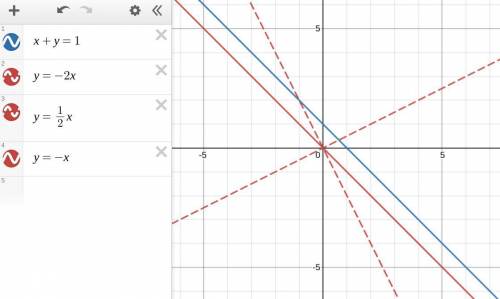Step-by-step explanation:
Two distinct lines will always have a point of intersection, provided they are not parallel. That is, the system of equations {x +y = 1, y = mx} will have a unique solution as long as m ≠ -1.
The solution to the system can be found by substitution:
x +mx = 1
x(1 +m) = 1 . . . . factor out x
x = 1/(1+m) . . . . . divide by the coefficient of x; we must have m ≠ -1
y = m/(1+m) . . . . find the y-coordinate of the solution
The point of intersection is (1/(1+m), m/(1+m)).
__
The above solution is undefined when the denominator is zero: m = -1. There is no solution for m = -1.
